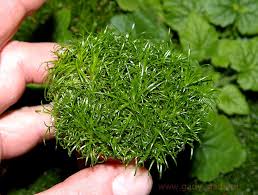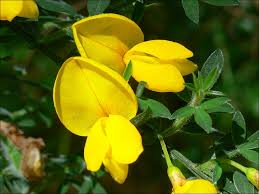Cirsium arvense
“Canada thistle”
ASTERACEAE
Herbaceous Perennial – Invasive Noxious Weed
Zone: all zones
Native habitat : Eusasia
Conditions
Soil: any, will handle a wide range, saline conditions too, not peat
Moisture: wide range (moist to dry)
Light: full sun to part shade
Exposure: general; tough
Plant size (h x w): 3′ – 5′ x 2′
Other: most commonly seen in cultivated fields

Aesthetic
Shape/stem: erect green stem, branched, prickly, stiffly upright
Leaf: spiny-toothed leaves, prickly
Flower: numerous small flowers in clusters, white to pink to purple, separate male and female flowers
Bloom: June to August
Other: each seed is attached to a feathery pappus; rhizomes spreading (deep, off-white)
Treatment (how to…)
This plant will seed itself prolifically as well as spread by roots. One plant can easily form a massive colony with in a few years  or less. It is best to get rid of this weed when it is young; as soon as you see a seedling, dig it up and dispose of it. If it is too late for this, it is much harder to remove. Dig up as much of the whole plant and as much of its roots and dispose. Be sure to wear gloves as the plants stems and leaves are painfully prickly. The roots do not tend to live that long (2-3 years) in the soil but the seeds can travel far in the wind making removal difficult to control. Repetitive treatment will be needed. Always remove before it goes to seed.
or less. It is best to get rid of this weed when it is young; as soon as you see a seedling, dig it up and dispose of it. If it is too late for this, it is much harder to remove. Dig up as much of the whole plant and as much of its roots and dispose. Be sure to wear gloves as the plants stems and leaves are painfully prickly. The roots do not tend to live that long (2-3 years) in the soil but the seeds can travel far in the wind making removal difficult to control. Repetitive treatment will be needed. Always remove before it goes to seed.
Vulnerabilities
Pests and disease: none significant
Deer resistant: deer resistant
Other animals: is toxic to grazing animals (they tend to avoid it)
Interest
Local info.: serious, noxious, invasive, introduced weed; will overwinter in Victoria as a rosette
Nature: invasive
Identification (key features): creeping and deep off-white roots; flowers male and female parts, smaller thistle flower, narrow, upright petals in tubular formation, pink to violet to white; Leaves simple and pinnate with spines on margins
Interesting facts:
Comments:












 May need to do this for more than one year. Strong rhizomatous root system. Through it doesn’t produce as much seed, it spreads itself around and will root from any piece of rhizome left behind. .
May need to do this for more than one year. Strong rhizomatous root system. Through it doesn’t produce as much seed, it spreads itself around and will root from any piece of rhizome left behind. .

























